Indira Gandhi - Biography
Introduction
We all know about our country's history, in which some freedom fighters fought for our Nation's independence, and some did this work by adopting non-violence. Indira Gandhi was an Indian politician who led the Indian National Congress as its leader for a long time. She was India's third prime minister. This article will discuss Indira Gandhi's biography in detail. indira-gandhi1.png
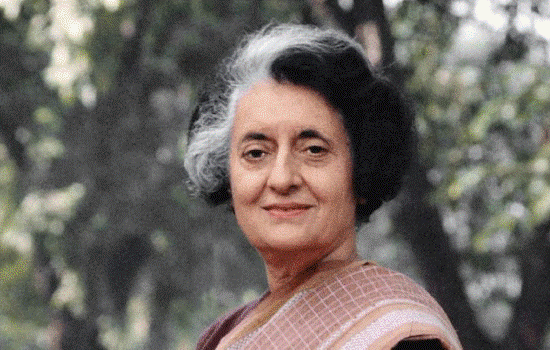
Indira Gandhi's Childhood
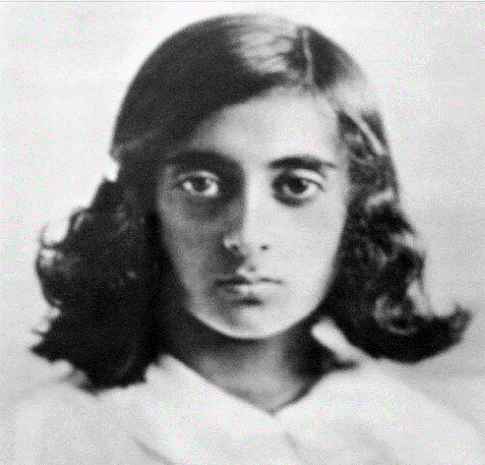
Indira Gandhi was born to a Kashmiri Pandit family in Allahabad on November 19, 1917. Jawaharlal Nehru, her father, was a significant player in the struggle for Indian independence from British control. Later, he also served as India's first Prime Minister. Indira was the only child because her younger brother died when she was young. She stayed with her mother, Kamala Nehru, at Allahabad's Anand Bhavan, a large family property.
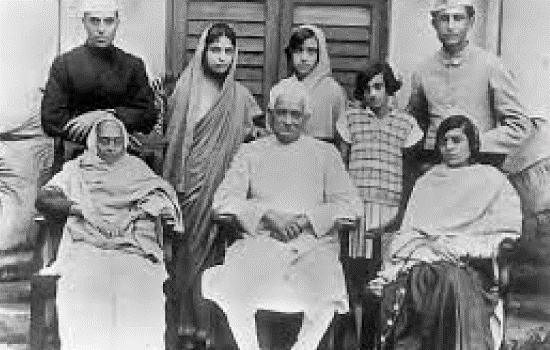
Her childhood was lonely and unhappy. Her father often used to go outside for political activities, and her mother had always been sick. Due to this, her mother died of tuberculosis when she was small. She only communicated with her father through letters.
Education of Indira Gandhi
Indira was educated at home and went to school on and off until she graduated in 1934. She attended the Modern School in Delhi, St Mary's in Allahabad, St Cecilia's and the International School in Geneva, and the Ecole Nouvelle in Bex.
She and her mother, Kamala, moved to the Ramakrishna Mission's Belur Math headquarters, where Swami Ranganathananda worked as her guardian. She pursued her schooling at Santiniketan's Vishwa Bharati, which was Visva-Bharati University, in 1951.
Rabindranath Tagore gave her the name Priyadarshini, which means "looking at everything with love" in Sanskrit, and she became known as Indira Priyadarshini Nehru after her conversation with him.
She regularly attended the Badminton School when her mother passed away before joining Somerville College to study history in 1937. Indira had to repeat the admission exam after failing the first time due to a bad result. She excelled in history, political science, and economics at Oxford, but she struggled in Latin, a compulsory subject. On the other hand, Indira was a vital part of the Oxford Majlis Asian Society.
Indira Gandhi's Marriage
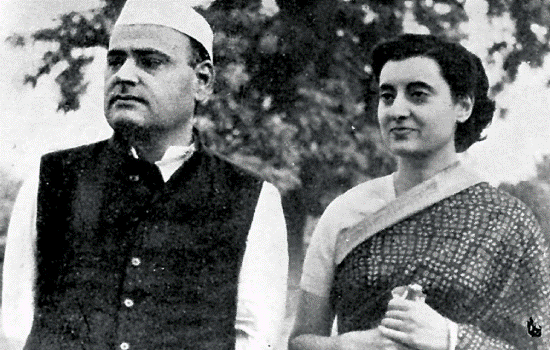
Indira Gandhi met Feroze Gandhi, an Indian student at Oxford University. Feroze Gandhi was a Youth Congress leader and journalist. Against her father's objection, Indira Gandhi married Feroze Gandhi in 1941. Feroze and Indira Gandhi had two children, Rajiv, and Sanjay Gandhi.
Feroze Gandhi and Mahatma Gandhi did not have a connection. Feroze Gandhi, in actuality, was a Parsi, and his full name was Feroze Jahangir Gandhi. Interracial marriage was not common during this time. As a result, the pair was universally hated. However, Mahatma Gandhi accepted their relationship. Indira Nehru and Feroze Gandhi were suggested to use the surname Gandhi.
After the country achieved independence, Jawaharlal Nehru, Indira Gandhi's father, was India's first prime minister. Indira later moved with her father from Allahabad to Delhi. Feroze, on the other hand, denied accompanying Indira. Feroze Gandhi was the editor of the National Herald, a journal founded by Motilal Nehru during the time.
Indira Gandhi's Profile
- Full Name: Indira Priyadarshini Gandhi
- Nick Name: Mother India
- Famous For: politician
- Date of Birth: November 19, 1917
- Birth Location: Allahabad, United Provinces, British India
- Zodiac Sign: Scorpio
- Date of Death: October 31, 1984
- Age: 67 Years (till Death)
- Cast: Brahmin
- Religion: Hinduism
- Profession: Former Indian Politician
- Citizenship: Indian
- Home Town: Allahabad, United Provinces, British India
- Marital Status: married but Widow at the time of death
- Husband Name: Feroze Gandhi
- Affair(s): M.O. Mathai
Feroze Gandhi
Dinesh Singh
Dhirendra Brahmachari
Mohammad Yunus
- Special Characteristics:
Her hair was white on the right side and black on the left.
The hairstyle was kept shoulder-length.
Family Members of Indira Gandhi
- Father: Former Indian Politician & First PM of India, Jawaharlal Nehru
- Mother: Freedom Fighter, Kamala Nehru
- Children name(s): Rajiv Gandhi
Sanjay Gandhi
Indira Gandhi's Physical Status
- Height: 5ft 4 inches
- Weight: 62 kg
- Body type: Slim
- Measurement: 34-30-32
- Eye Color: Black
- Hair Colors: Salt & Pepper
Education qualification of Indira Gandhi
- School: St. Cecilia's Public School, Delhi
International School of Geneva
École nouvelle de la Suisse romande, Lausanne, Switzerland
- University Name: Somerville College, Oxford (dropout)
Visva-Bharati University (dropout)
Badminton School, Bristol, England
Indira Gandhi's Favorite Things
- Favorite Books: Iris Murdoch's "An Unofficial Rose"
- Favorite Holiday Destination: Kashmir
- Favorite Person: Child Actor
- Hobbies: Reading
Early Years in Politics
In the early 1950s, Indira operated as an informal personal assistant to her father, the prime minister. She entered the Congress Party's working committee in 1955 and progressed through the ranks to become its president four years later.
While Indira and Nehru were on a formal presidential visit to Bhutan in 1958, Feroz Gandhi had a heart attack for the first time, and thus Indira went home to look after him. But, after having a second heart attack, Feroz died in Delhi in 1960.
In 1964, Indira Gandhi's father passed away, and Lal Bahadur Shastri became Prime Minister. Shastri chose Indira Gandhi as his Minister of Information and Broadcasting; she was also a Rajya Sabha member.
Prime Minister Shastri died suddenly in 1966. As a general election candidate, Indira Gandhi was appointed Prime Minister. Politicians on both sides of the Congress Party tried to keep her in control, but later they realized that they had misinterpreted Nehru's daughter entirely.
As India's Prime Minister
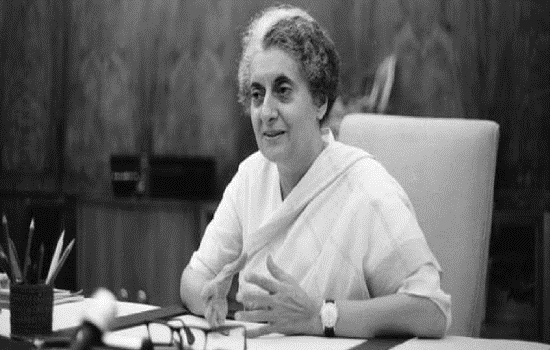
The Congress Party was in difficulty by 1966. It split into two sections, with Indira Gandhi leading the left-wing socialist group. The party lost nearly 60 seats in the Parliament's lower house, the Lok Sabha. India Gandhi continued as prime minister in the 1967 election cycle after establishing a governing party with the Indian Communist and Socialist parties.
Indira Gandhi made several popular decisions as Prime Minister. In reaction to China's test launch at Lop Nur in 1967, she began a nuclear weapons program. (India tested nuclear weapons in 1974.) She developed a strong connection with the Soviet Union to counterbalance Pakistan's ties with the US, which had been motivated by shared personal animosity for US President Richard Nixon.
Indira Gandhi removed the maharajas of India's many states, removing them of their rights and titles in keeping with her socialist ideas. In July 1969, she nationalized the banks, mining, and oil businesses. India became a positive Green Revolution success under her guidance, exporting a surplus of wheat, rice, and other crops through the early 1970s.
Indira Gandhi declared war on Pakistan in 1971 in reply to a surge of refugees from East Pakistan. The East Pakistani/Indian armies won the battle, and what had been East Pakistan became Bangladesh.
Re-Election, The Emergency Declaration, And Trial
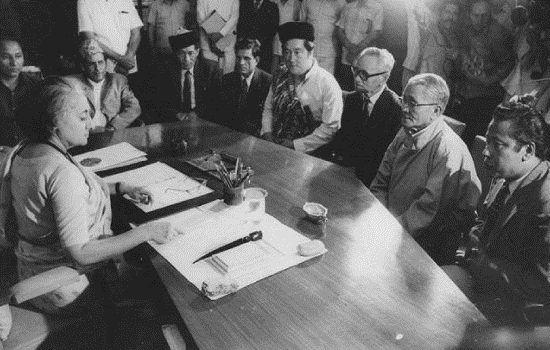
Indira Gandhi's party won national parliamentary elections in 1972, depending on Pakistan's loss and the slogan "Garibi Hatao" or "Eradicate Poverty." Her opponent, Raj Narain of the Socialist Party, accused her of corruption and political corruption." Indira should have been removed from her membership in Parliament and prevented from holding political office for six years, according to the High Court in Allahabad in June 1975.
Even though massive protests followed the judgment, Indira Gandhi refused to resign as Prime Minister. Instead, she had India's president proclaim an emergency declaration. Indira introduced various authoritarian policy changes during the time of emergency, and she dismissed and imprisoned opposition leaders in national and state governments.
She developed a program of forced abortions in which poor urban males were subjected to forcible vasectomies to control population increase. Sanjay, Indira's younger son, started a campaign to remove the slums around Delhi, which caused the deaths of hundreds of people and the resettlement of thousands.
Arrests And The Fall
She may have started to believe her propaganda, believing that the Indian people liked her and supported her throughout the years-long state of emergency. Indira Gandhi made a huge mistake when she called for fresh elections in March 1977. Indira Gandhi's party was defeated in elections by the Janata Party, which campaigned on a democracy vs. authoritarian rule platform and removed Indira from power.
Indira Gandhi was temporarily imprisoned for governmental corruption in October 1977. In December 1978, Indira Gandhi was arrested again on the same allegations. The Janata Party, on the other hand, was experiencing difficulties.
Indira Reappears Once Again
Indira Gandhi was re-elected as a Prime Minister for a fourth term. Her victory was tempered by losing her rightful heir, Sanjay, in an airplane disaster in June of that year. Dissatisfaction and outright separatist movements were rolling across India by 1982.
The Golden Temple's Operation Bluestar
Bhindranwale and his armed supporters captured and protected the second-most holy temple, the Golden Temple complex in Amritsar, India, in 1983. They were angry because their birthplace, Punjab, had been partitioned between India and Pakistan in 1947.
Punjabis lost their old capital, Lahore, to Pakistan in 1947, and the newly formed capital, Chandigarh, was transferred to Haryana two decades later. According to the Delhi administration, Haryana and Punjab would have to share the city.
Indira Gandhi planned to make a frontal attack with the Indian Army on the building to capture or kill Bhindranwale. Even though June 3 was the most important Sikh event and the complex was packed with innocent citizens, she ordered the attack at the start of June 1984. Because the Indian Army had a robust Sikh community, the attack force commander, Major General Kuldip Singh Brar, and many of his soldiers were Sikhs.
All connected communications links to Punjab were stopped in preparation for the attack. The Army sent army vehicles and tanks to encircle the temple compound on June 3, and they attacked quickly in the early morning hours of June 5.
Four hundred ninety-two civilians, including women and children, and 83 Indian army forces were killed, as per official Indian government figures. According to other estimates from medical personnel and eyewitnesses, the carnage claimed the lives of almost 2,000 people.
Jarnail Singh Bhindranwale and his companions were killed. The Akhal Takt was seriously destroyed by shells and gunfire, further angering Sikhs worldwide.
Execution and its Consequences
A lot of Sikh troops resigned from the Indian Army during Operation Bluestar. There were conflicts in specific regions between those who resigned and others who remained loyal to the Army.
On October 31, 1984, Indira Gandhi gave a press conference to a British journalist on the grounds near her official house. As she neared two of her Sikh bodyguards, they pulled their service rifles and shot fire. Satwant Singh used a self-loading gun thirty times, while Beant Singh used a pistol three times. Both guys then quietly submitted their weaponry.
Indira Gandhi was killed that afternoon following surgery. Beant Singh was killed in prison, while Satwant Singh and confessed operator Kehar Singh were later hanged.
When reports of the Prime Minister's death spread, mobs of Hindus raged across northern India. 3,000 to 20,000 Sikhs were killed in the four-day Anti-Sikh Riots, and many of them were burnt alive. Haryana state had the most violence. Because India took longer than expected to react to the pogrom, sympathy for the Sikh separatist Khalistan movement grew in the months that followed.
Indira Gandhi Some Other Facts
- Her younger brother passed away when she was just a week old.
- Indira was nurtured at Allahabad's Anand Bhavan.
- She collaborated extensively with the Oxford Majlis Asian Society while at Oxford University.
- Indira received the honor of being one of the Oxasians, prominent Asian alumni from the University of Oxford, in 2010, despite not finishing her diploma.
- During the Bangladesh liberation war in 1971, Indira led India to victory against Pakistan. She received the renowned Bharat Ratna award for this, and also she was given a medal of the Bangladesh Freedom Honour in 2011.
- She placed India on the map with other nuclear-armed nations.